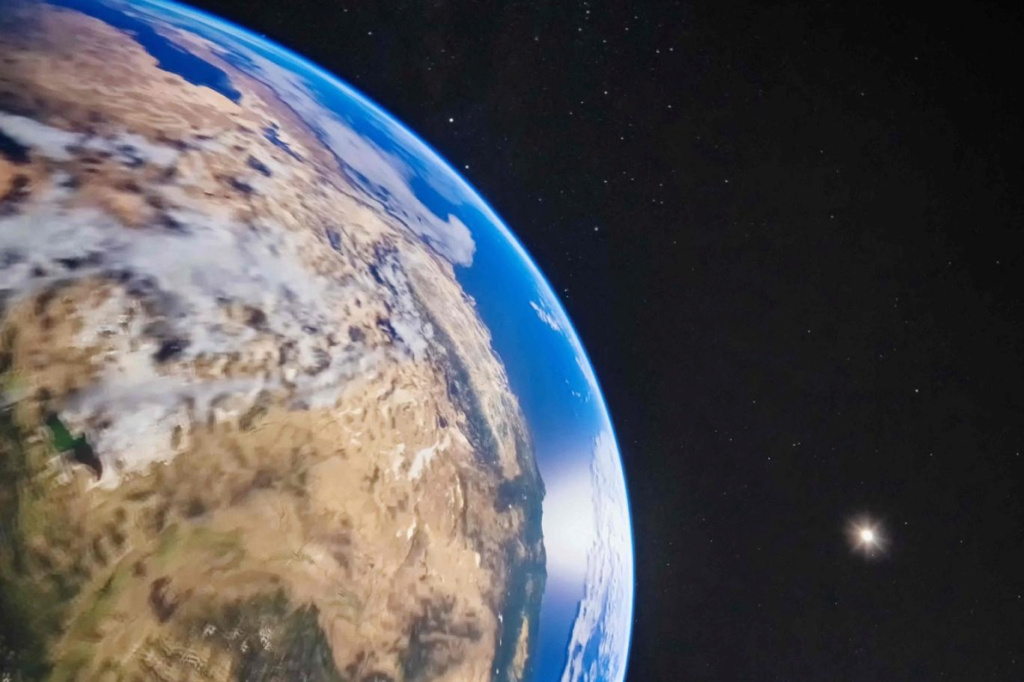The European probe, Euclid, is preparing to explore the darkness of the universe

Dark matter and dark energy are of an unknown nature, but they seem to control the universe by 95 percent (AFP)
Saturday begins on a journey that will last until 2029 to study two billion galaxies, which contain 95 percent of the dark cosmic materials.
The European space probe Euclid, which will be launched on Saturday from Cape Canaveral base in the US state of Florida , is trying to uncover one of the most important mysteries in astronomy represented by two mysterious dark substances that make up 95 percent of the universe, but there is almost no data available on their exact nature.
The European Space Agency (ESA) mission will launch on Saturday at 15:11 (GMT) aboard the SpaceX Falcon 9 rocket.

The two-ton probe, designed by Thales Alenia Space, will be launched to its final location, 1.5 million kilometers from Earth. From there, Euclid, named after the inventor of geometry, will draw a three-dimensional map of the universe, including two billion galaxies in part. It covers a third of the planetarium.
The third dimension of the map will be time: by capturing light that has taken up to ten billion years to reach us from galaxies, Euclid will delve into the 13.8 billion year old past of the universe.
The goal is to reconstruct the history of the universe by dividing it into "parts of time", as the astrophysicist Yannick Milliers, head of the 16-nation "Euclidean" union, explained during a press conference.
The mission's hope is that this will help reveal the traces left by dark matter and dark energy during the formation of galaxies.
Dark matter and dark energy are of an unknown nature, but they seem to control a universe that consists of only 5 percent of "normal" visible matter, a lack of knowledge that Euclid mission leader Giuseppe Racca describes as a source of "cosmological embarrassment".

Without this information, scientists cannot explain how the universe works. The mystery dates back to the 1930s, when Swiss astronomer Fritz Zwicky assumed, while observing the Coma cluster, that a large part of its mass was invisible.
After nearly 100 years, the existence of this missing substance, which is described as black because it neither absorbs nor reflects light, has become unanimous. "When we look at the tip of the iceberg, there is something we don't understand, everything is going very fast," says David Elbaz, a member of the Euclid Union.
The speed of rotation of stars inside galaxies, including our sun, is so high that this matter has to be ejected from them, "like a rocket pulling itself away from Earth's gravity and taking off", as this astrophysicist at the Atomic Energy Commission explains to AFP. , this matter remains present, and therefore "we conclude that there is an additional weight that maintains it."
In the late 1990s, astronomers discovered a second anomaly, on the scale of the entire universe, in which galaxies are moving away from each other more quickly, under the influence of a repulsive force called dark energy.
This acceleration in the expansion of the universe is expected to have begun six billion years ago, and by going back in time 10 billion years ago, Euclid can observe and better identify the first effects of dark energy, as the mission leaders hope.

But how can the invisible be noticed? By measuring its absence, a torsional effect is called gravitational lensing: light from a distant object, such as a galaxy, is deflected imperceptibly by the visible and dark matter it encounters on its way back to the observation point.
"By subtracting visible matter, we can calculate the presence of dark matter," explains Giuseppe Racca.
"By watching this path of distortions in the history of the universe, we will understand how dark energy behaves," says David Elbaz.
The scientist likens it to a rubber balloon marked "to see how fast the balloon inflates", which makes it possible to understand the effects of dark matter. As for dark energy, it is like breathing that makes the balloon inflate.
The Euclid probe has two instruments on board, a visible light imager (VIS) and a near infrared spectrophotometer (NISP).
According to Yannick Millier, this unprecedented mapping will constitute a "gold mine of astrophysics", as it allows the study of the shape of galaxies, the birth of clusters, and black holes.
This could help scientists finally catch up with the mysterious particles that make up dark matter that are evading detection. The €1.5 billion ($1.64 billion) European mission is expected to run until 2029 at least.
Source : websites

